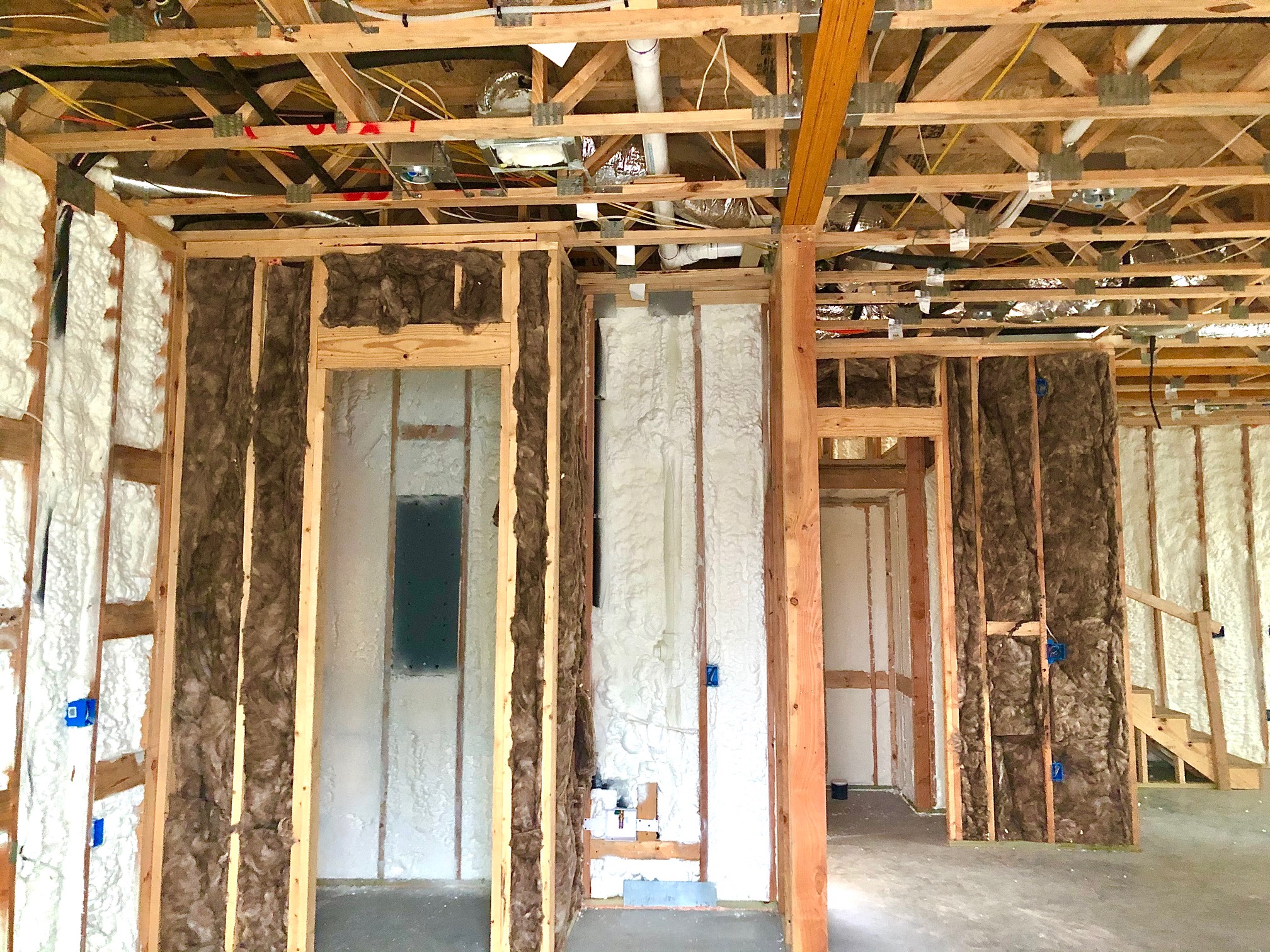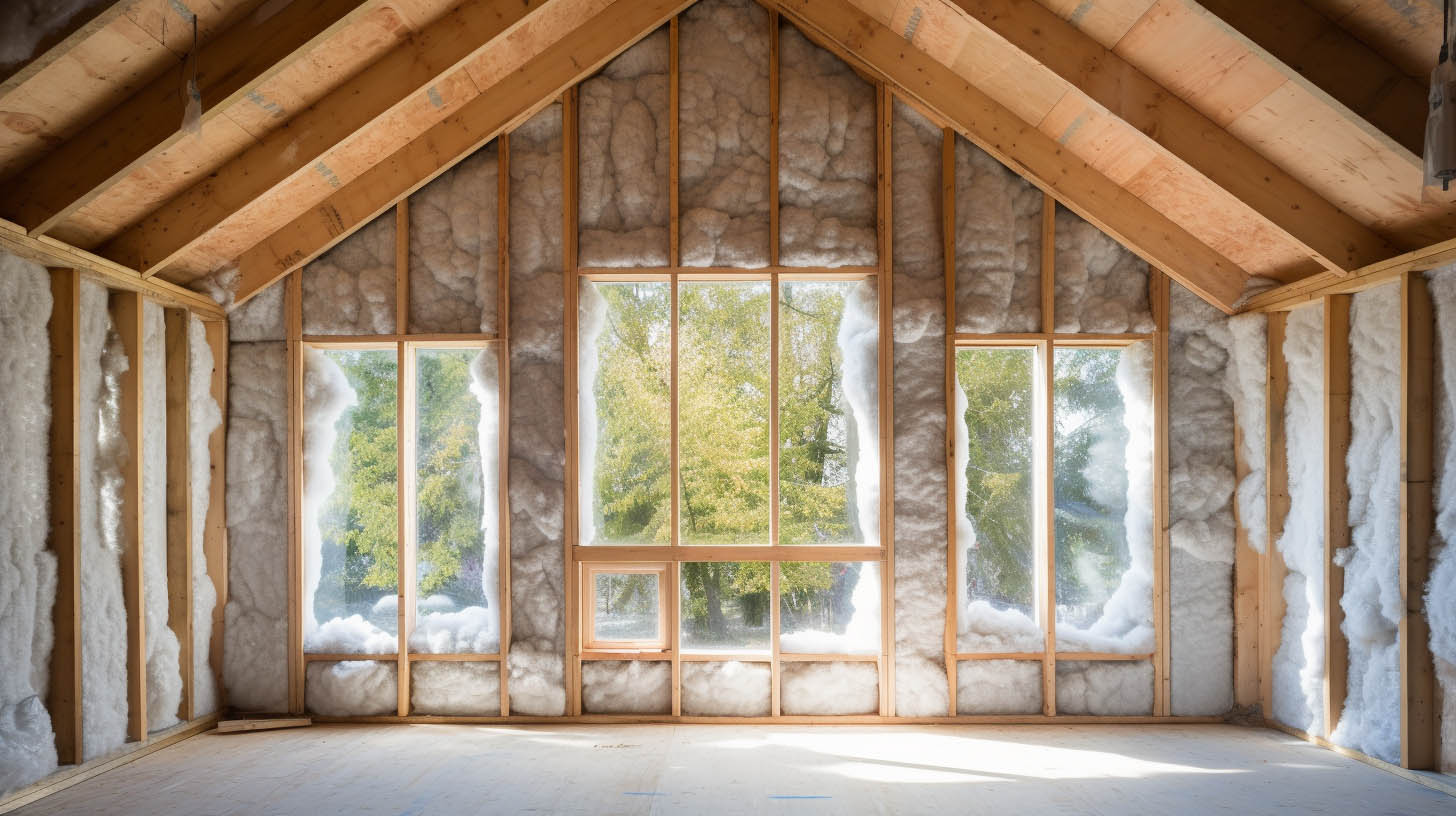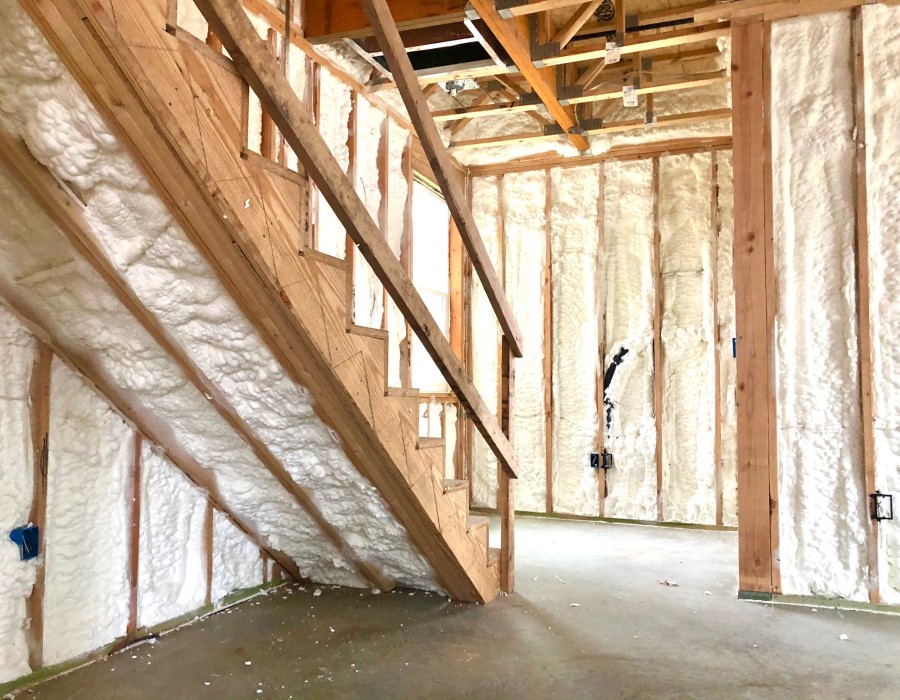When selecting insulation for a home, its ability to resist fire is just as important as its thermal performance. For homeowners in Boise, Idaho, it’s reassuring to know that all modern home spay foam insulation materials sold in the United States must meet stringent fire safety standards established by building codes. These ratings are determined through a standardized test, ASTM E84, which measures how quickly a flame will spread across a material’s surface and how much smoke it will produce. Materials are then assigned a fire rating, with a Class A rating signifying the highest level of fire resistance.
While all code-compliant insulation is treated to be fire-resistant, different materials behave differently when exposed to flames. Some are naturally non-combustible, while others are combustible materials that have been treated with fire retardants. This guide will break down the fire safety ratings of today's most common insulation products and explain what these ratings mean for the safety of your home. The information is based on established building science and has been reviewed for accuracy by industry professionals like Ava Clark, who has six years of experience working with insulation teams.
Understanding the Language of Fire Ratings
To compare insulation materials, it’s important to understand the terms used to rate them. The primary test for interior finishes, including insulation, is ASTM E84, often called the Steiner Tunnel Test. In this test, a sample of the material is placed in a tunnel, exposed to a flame at one end, and observed. The test yields two key numbers:
- Flame Spread Index (FSI): This measures how fast a flame moves across the material's surface. A lower number is better. Red oak is used as a benchmark with a rating of 100.
- Smoke Developed Index (SDI): This measures how much smoke the material produces as it burns. Again, a lower number is better.
Based on these two numbers, materials are placed into one of three classes. For insulation used in homes, a Class A rating is typically required by building codes.
- Class A: Flame Spread Index of 0-25; Smoke Developed Index of 0-450.
- Class B: Flame Spread Index of 26-75; Smoke Developed Index of 0-450.
- Class C: Flame Spread Index of 76-200; Smoke Developed Index of 0-450.
How Common Insulation Materials Perform in a Fire
While most code-compliant insulation achieves a Class A rating, each material type behaves differently when exposed to fire. Here’s a look at the most common options.

Mineral Wool and Fiberglass
These are the most inherently fire-resistant insulation materials because they are made from non-combustible materials.
- Mineral Wool (or Rock Wool): This is the top performer for fire safety. It’s made from molten rock and slag that is spun into fibers. It is naturally non-combustible and can withstand temperatures in excess of 1,800°F. Because of this, mineral wool is often required by building codes for "fire blocking" in certain areas of a home's framing.
- Fiberglass: Made from spun glass, fiberglass is also non-combustible. However, some fiberglass products come with a paper or foil facing that is combustible. This facing is treated with a fire retardant to meet code, but the core insulation itself will not burn.
Cellulose Insulation
Cellulose is made from recycled paper products, which are organic and naturally flammable. To counteract this, cellulose insulation is heavily treated with non-toxic fire retardants, most commonly borates. This treatment is very effective. When exposed to a flame, the retardants create a charring effect that slows the spread of the fire and prevents the insulation from igniting. All commercially available cellulose insulation must pass the same fire safety tests as other materials and carries a Class A fire rating.
Spray Foam Insulation
Spray foam, in both its open-cell and closed-cell forms, is a plastic. As such, it is a combustible material. However, like cellulose, it is treated with a fire retardant during the manufacturing process that allows it to achieve a Class A rating. When exposed to a flame, it will char and self-extinguish once the flame source is removed.
A critical point for foam insulation is that building codes require it to be separated from interior living spaces by a thermal barrier. This is a material that will protect the foam from a potential fire for at least 15 minutes. In most cases, this barrier is simply half-inch drywall.
A Summary of Insulation Fire Performance
The Importance of a Thermal Barrier
The requirement for a thermal barrier over spray foam is a key part of a home's overall fire safety system. It's not that the foam is unsafe; it's a "belt and suspenders" approach. The drywall protects the foam, and the fire retardants in the foam slow its combustion if the drywall is breached.

In some areas where drywall is not practical, like an attic roof deck that will be left exposed for storage, a special fire-retardant coating, known as an intumescent paint, can be sprayed over the foam to serve as an approved thermal barrier.
Bonus Tip: When getting a quote for spray foam in an attic or crawl space, always ask the contractor if a thermal barrier is required by code and, if so, whether the cost of that barrier is included in their proposal.
Fire Safety Considerations for Boise, ID
These principles of fire safety are especially important in certain geographic areas. For homeowners in Boise and the surrounding Treasure Valley, for example, fire safety is a particularly relevant topic. Much of the area is considered a Wildland-Urban Interface (WUI), where homes are built in or near areas with a high risk of wildfire.
Homes built in a designated WUI zone often have to comply with stricter building codes designed to make them more ignition-resistant. These codes may require specific construction techniques and materials, particularly for roofing, siding, and eaves. While standard, Class A-rated insulation meets the base code, choosing a non-combustible insulation like mineral wool or fiberglass for walls and attics can provide an additional layer of protection and peace of mind in these high-risk areas.
Key Code and Installation Requirements
- The Application Location: Insulation used in a basement requires different considerations than insulation in an attic. For example, spray foam applied to the underside of a roof deck in an attic that is used for storage will likely need an intumescent coating.
- Proximity to Heat Sources: Building codes require that all insulation be kept a safe distance from heat-producing fixtures, such as recessed "can" lights, chimneys, and gas vents, unless those fixtures are specifically rated for direct contact with insulation (marked "IC-rated").
- Installation Quality: A material's fire rating is only valid if it's installed correctly. A professional contractor will be familiar with all the fire-blocking and thermal barrier requirements in the local Boise building codes.
Your Top Questions About Fire Safety and Insulation Answered
Is any insulation completely fireproof?
The correct term is non-combustible. Materials like mineral wool and fiberglass will not burn. However, at very high temperatures, such as in a fully engulfed house fire, they will melt. The key is that they will not contribute fuel to the fire.
Is the paper backing on fiberglass insulation dangerous?
The kraft paper facing on some fiberglass batts is combustible, but it is treated to be fire-retardant. It has a Class A rating, but it will burn. Many builders now prefer to use unfaced batts to reduce the amount of combustible material in a wall cavity.
Why is spray foam allowed if it's combustible?
Spray foam is allowed because it is treated to meet the same Class A fire standards as other materials, and because building codes require the extra protection of a thermal barrier. This system-based approach ensures a high level of safety.
Final Thoughts on Insulation and Fire Safety
All modern home insulation materials are safe when installed correctly and in accordance with building codes. For homeowners in Boise, choosing a product with a Class A fire rating is the first and most important step. While combustible materials like cellulose and spray foam are treated to be highly fire-resistant, non-combustible options like mineral wool and fiberglass offer the highest level of inherent fire safety, making them an excellent choice, especially for homes in wildfire-prone areas.
Getting a Professional Safety and Insulation Assessment
Understanding how to best protect your home involves a detailed knowledge of building science and local codes. Because correct installation is essential for both thermal performance and fire safety, working with an expert is the best course of action. A professional insulation contractor can evaluate a home’s specific needs and recommend an appropriate system. For homeowners in Nevada, consulting with a company that has a broad range of experience, such as Nevada Urethane, can provide clear guidance. They can be reached for a professional evaluation at (775) 500-0024 or by email at [email protected].
Reviewer: Maria Lopez offered detailed feedback after reviewing this post. Her 10 years of experience in spray foam work helped guide the tone and suggestions toward realistic strategies.






Comments